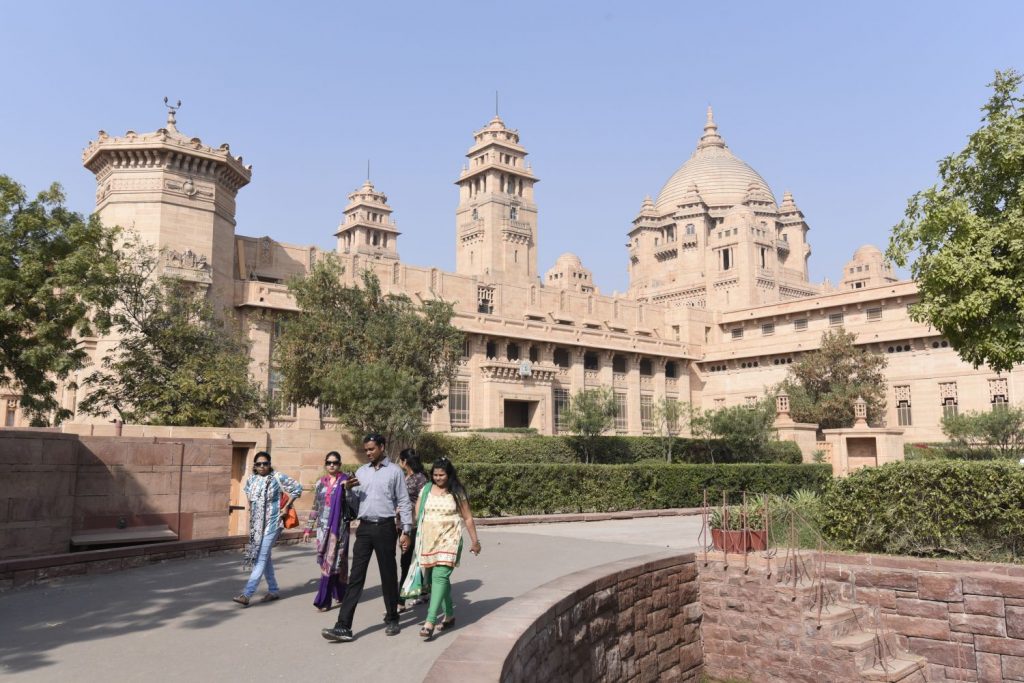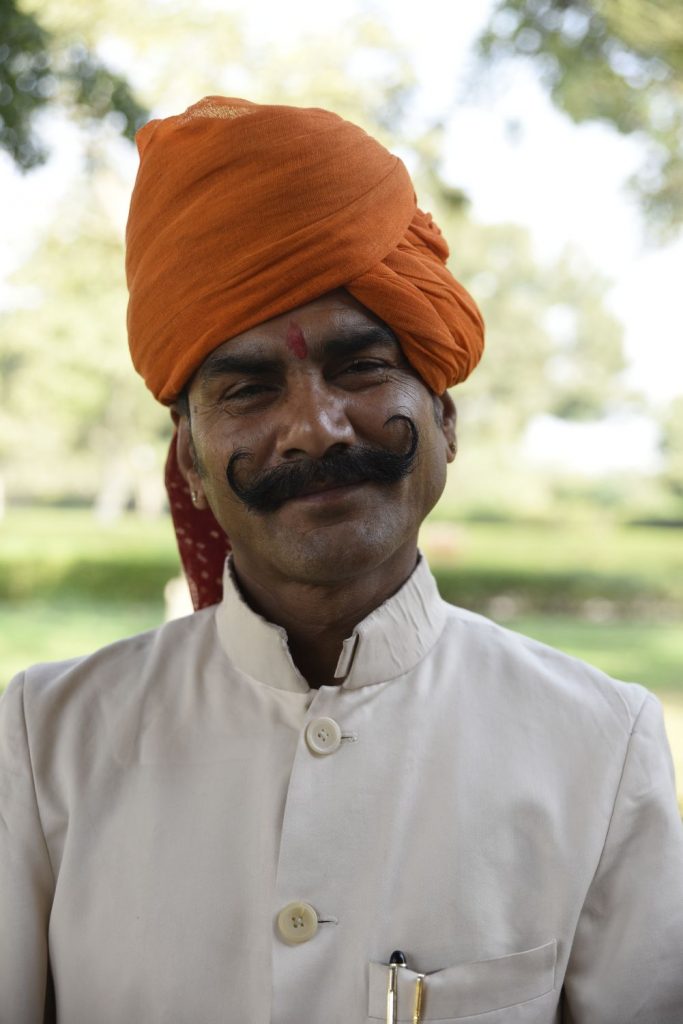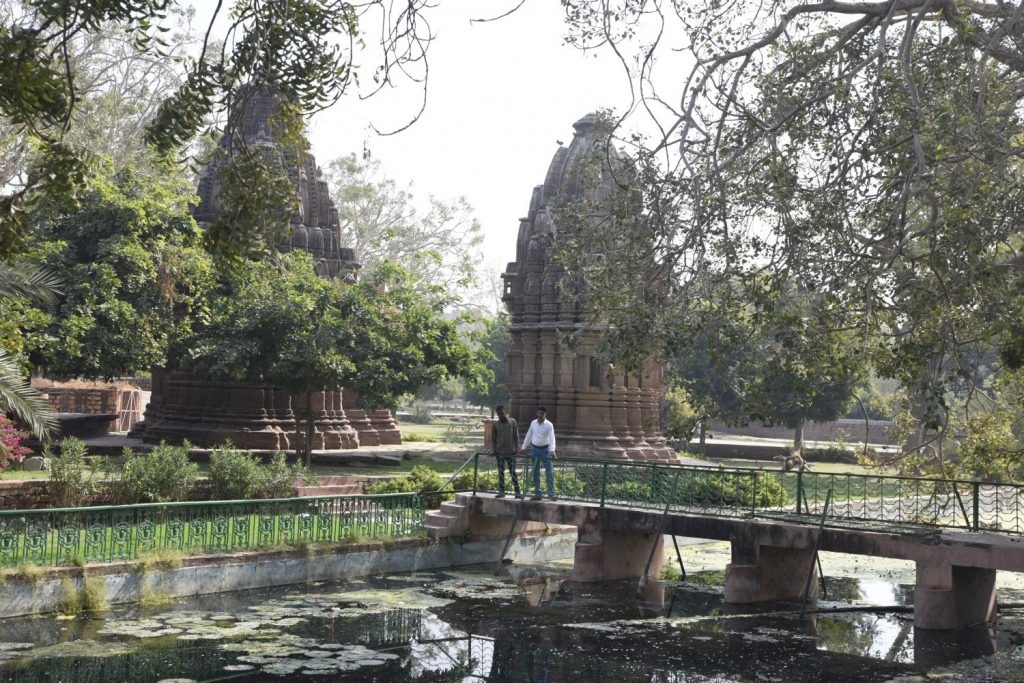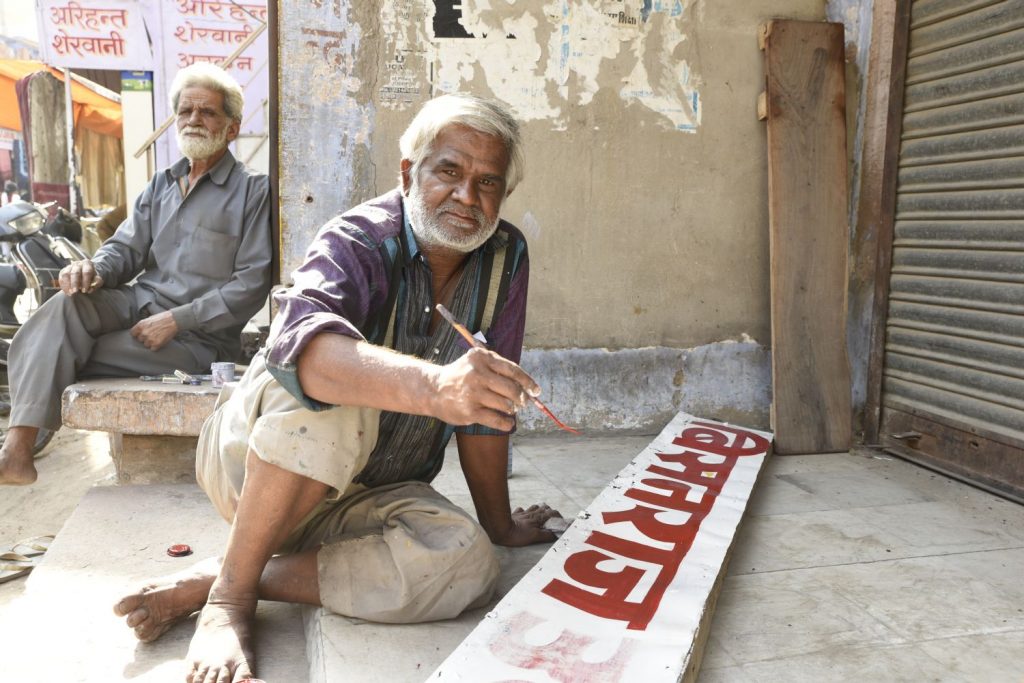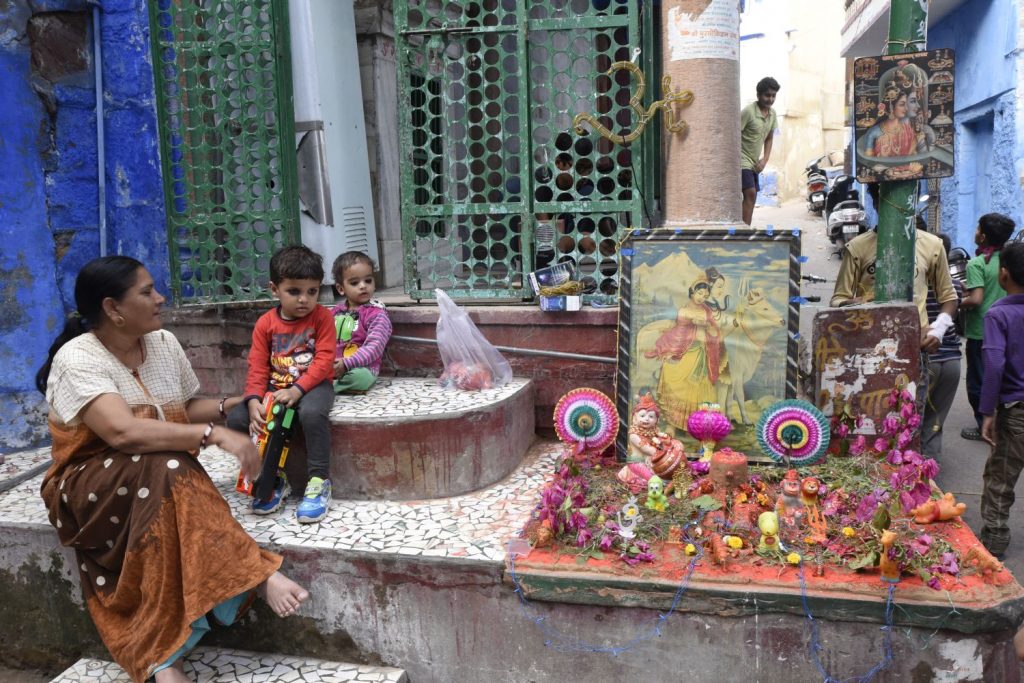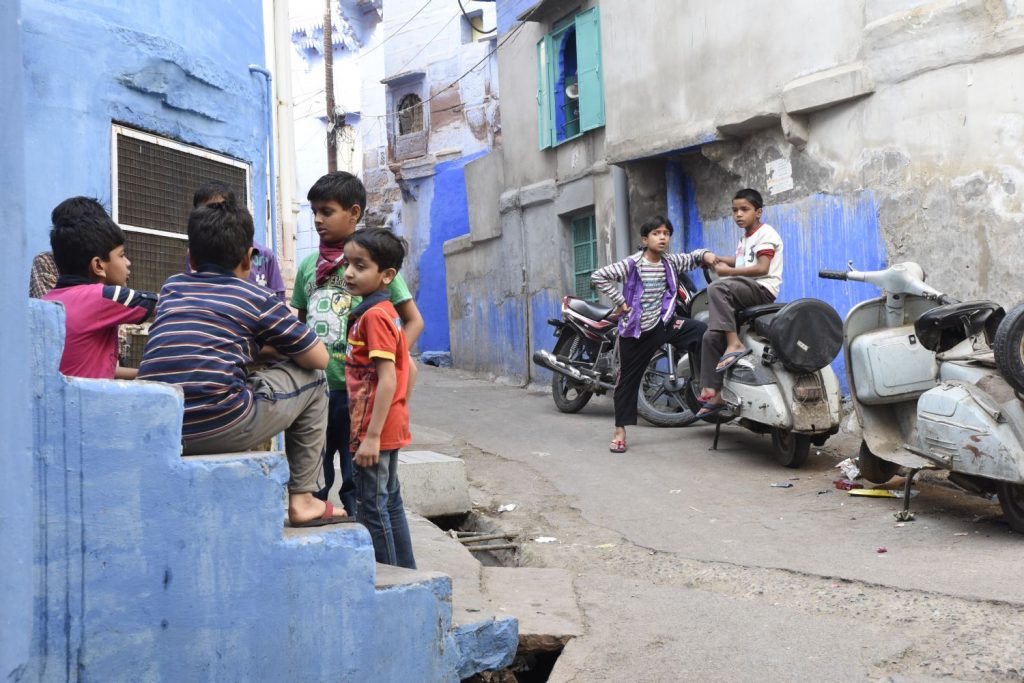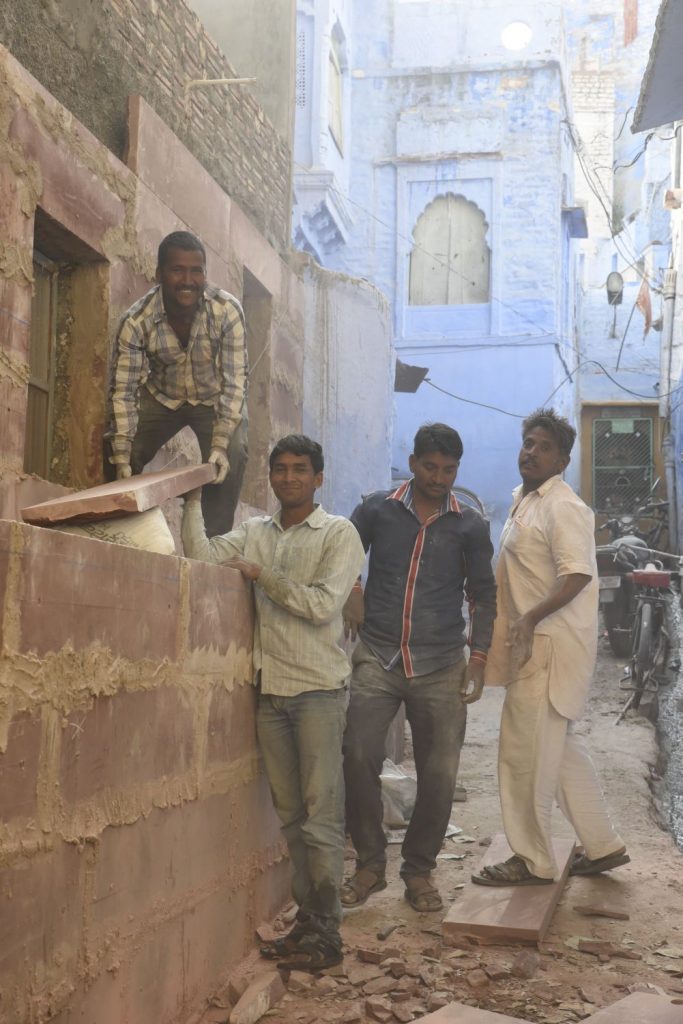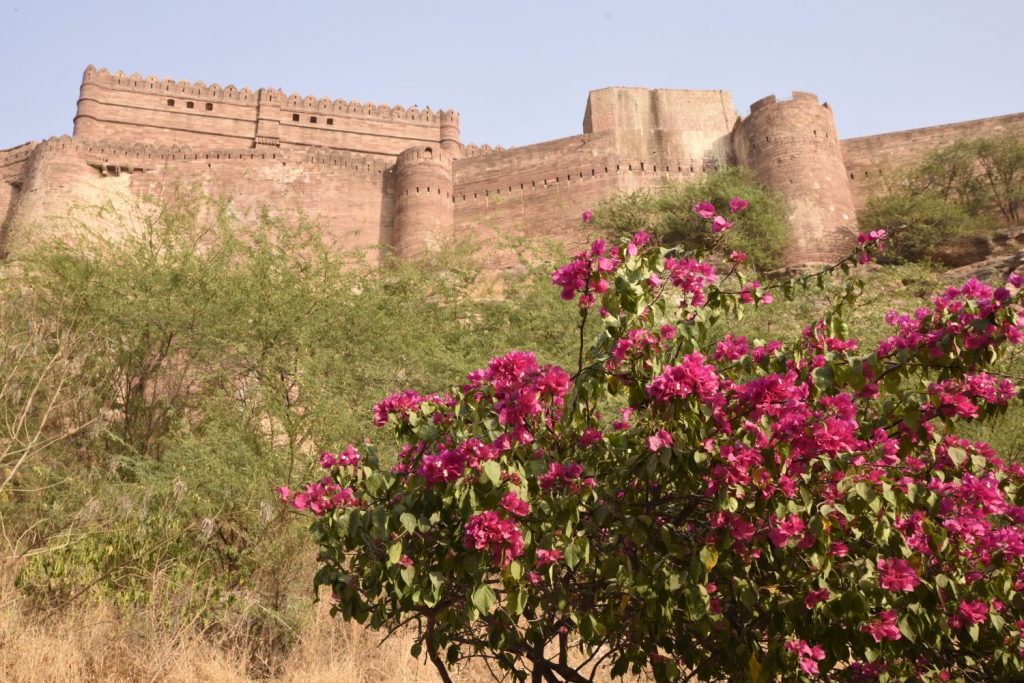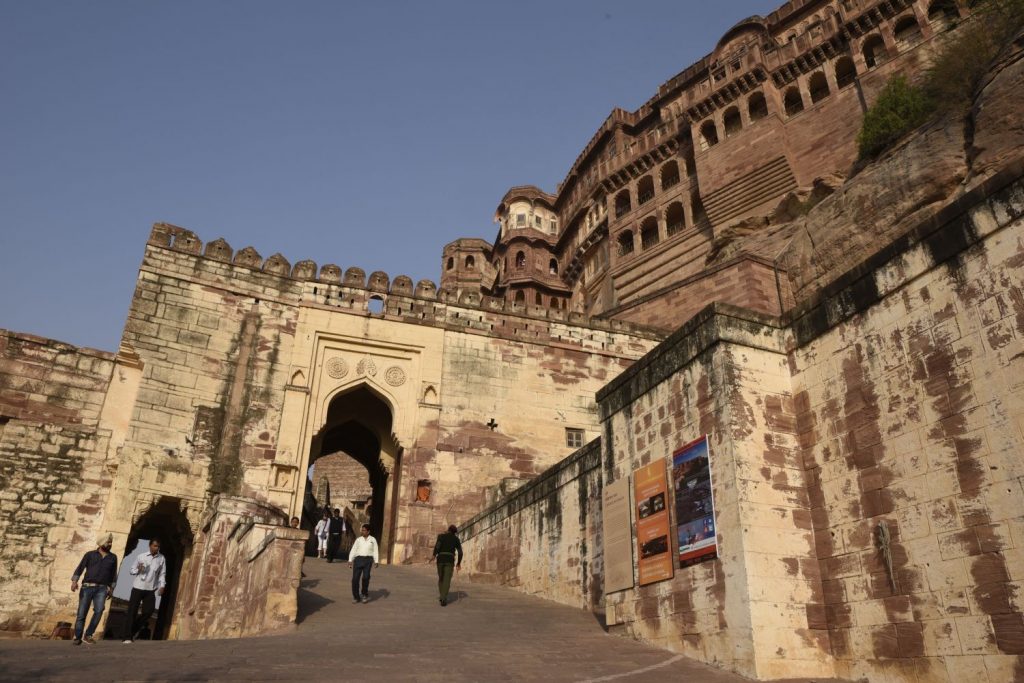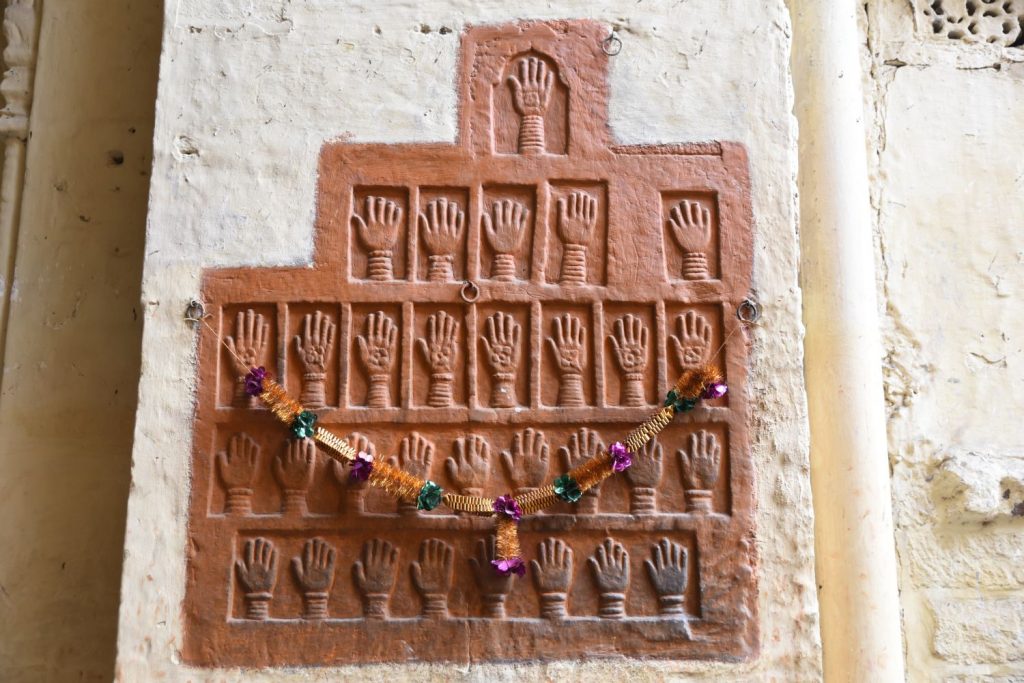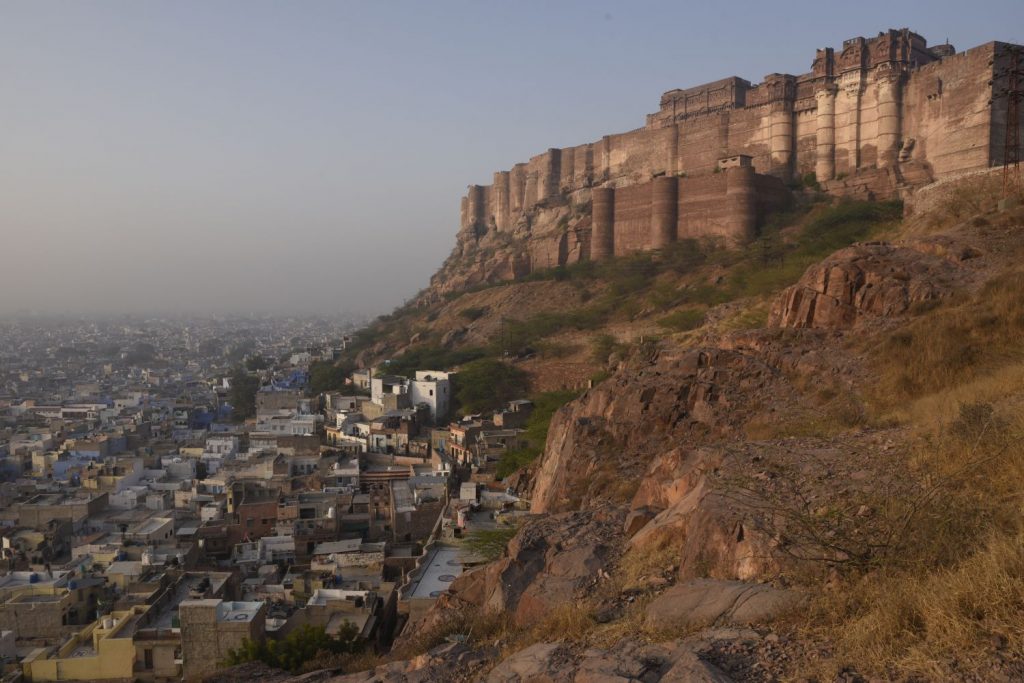
If “Pushy Kar” was a disappointment, Jodhpur exceeded expectations.
It is a fascinating city full of life, history and colour. Although it is certainly on the tourist circuit, Jodhpur’s size is big enough that the tourism is diluted and unlike Pushy Kar, those preying on tourists aren’t constantly in your face.
I had high hopes for Jodhpur all along. It’s known as the Blue City because so many buildings in the older part are covered in a blue wash. Originally the blue was reserved for Brahmins, but later it was adopted for among other reasons the belief that the indigo used to make the blue deterred insects.
Jodhpur is also dominated by a very impressive fortress, Mehrangarh, that is perched atop a rocky cliff overlooking the city, its high ramparts blending into the sandstone they sit on.
My hotel, one of the more expensive ones of this trip, is in an old haveli, or royal mansion. Although my room was fairly basic, other than a beautifully painted closet and the necessities, the halls and crannies were ornately decorated and the floor plan, with various marble stairs and courtyards, was one I easily got lost in at first.
I was up early my first full day, yesterday, to take an auto rickshaw up the hill to Jaswant Thada, some monuments said to provide a great view in the morning as the sunlight hits the fortress. Unfortunately a man there wouldn’t let me onto the grounds until the monuments opened at 9 a.m., well past the best light. My driver was helpful in finding a plan B once I explained to him what I wanted. He drove a short way down the road and consulted with a man there, then led me on a path up some rocks to the edge of a cliff that provided a great view of the fortress, lit up in morning light, as well as the Blue City below.
He offered to take me on an extended tour of the city, and although I had doubts about doing the full tour, I agreed to it as we went along and as I was able to grab breakfast.
First he took me to an area in the Blue City where the streets were too narrow for the auto rickshaw. We got out and walked through the winding alleys, climbing a hill. Many of the houses, though poor, had ornate tops, lattice work and balconies. I made a note to come back to this area when I could explore it at my own pace.
After breakfast at my hotel, I met the driver again and we went to two other sites.
The first was Umaaid Bhawan Palace, which was built in 1929 for Maharaja Umaid Singh and was designed by British architect Henry Lanchester in a style influenced by traditional Indian styles. Part of the palace is home to the current Maharaja while part is a luxury hotel. Neither of these parts is open to the casual public, but a mildly interesting museum and a small part of the grounds are. The museum told about the making of the building, about the royal family and it showed some fancy clocks designed like steam locomotives and other forms.
Outside, but housed behind glass, was a collection of early 20th century luxury cars owned by the Maharaja,including several very old classic Rolls Royces.
Some of the palace workers wore colourful orange turbans. One man had a handlebar moustache. I admired it and asked if he would pose for a photo, which he willingly did. He told me it took him six months to grow his moustache.
Lastly, we visited the Mandore Gardens, also on the edge of Jodhpur, which were in a peaceful setting and contained a number of old Hindu temples.
After a nap during the hottest part of the day – it was up in the 30s – I took a long walk through the bazaars in the older part of the city, making my way to the part of the Blue City that I’d visited earlier in the day with the auto rickshaw driver.
It was good to be able to walk at my own pace, engage local people with my feeble Hindi, and get a few to pose for photos. One young girl told me she’d never before heard a foreigner speaking any Hindi.
Finally, around 4:30 p.m., I reached the base of Mehrangarh. The guards warned me it was closing at 5 p.m., but I made the climb anyway because the light was nice.
You climb a steep roadway through a series of fortified gates, built to deter attacks by enemy elephants. Gates are built at right angles to the roadway so the elephants can’t get a good run, and there are long sharp spikes on the doors to discourage elephants from battering them. Apparently these defences worked.
One sad sight is the hand prints at the top of widows of the Maharajas who left their prints when they went off to die on the Maharaja’s funeral pyre under the old Hindu custom of “sati,” which required widows to be burned alive on their husbands’ funeral pyres. The last time this was done for a Jodhpur Maharaja was in 1843.
This morning I left my bags at the hotel after checking out in the morning and returned to Mehrangarh for a more detailed look. They have a very good audio tour which is included in the admission price, which like most attractions in India, is charged at a much higher price for foreigners. The audio told about the history of the fortress, the Jodhpur royal family, the restoration of the fortress, and the museum pieces, which included Marwari paintings (a blend of Rajput and Moghul miniature styles) and weaponry, including lethal swords and daggers.
Particularly impressive were the carved details such as the grilles of the windows that appeared to be wood, but were actually sandstone lattice work.
The day was getting very hot and I had little energy left, so I got a ride to a wonderful lassi stall near the old clock tower to enjoy a banana lassi, before picking up my bags from the hotel and getting an auto rickshaw to the railway station.
I’m now waiting for my afternoon and evening train that should get me into Jaisalmer late tonight.
